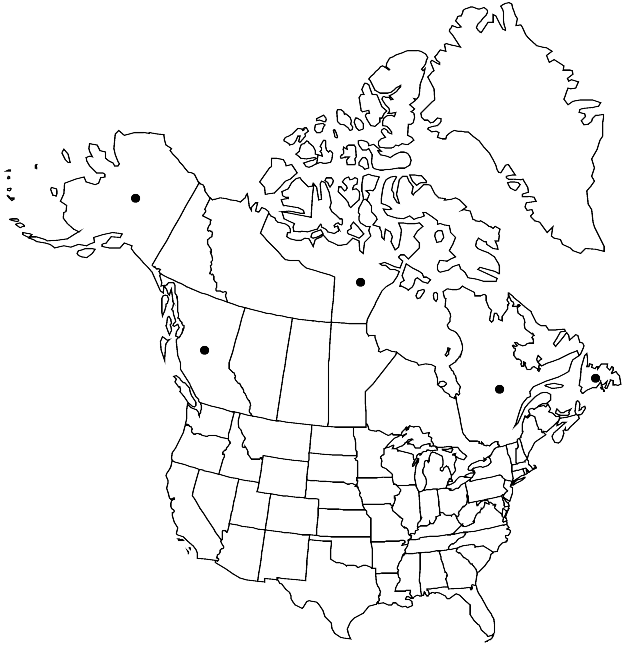Tayloria splachnoides
J. Sci. Arts (London) 2(3): 144. 1816.
Plants 1–3 cm, in loose tufts, clear green distally. Stems sometimes branched. Leaves crowded at stem and branch apices, turgid when dry, lingulate to obovate, 3 × 0.7–1 mm; margins recurved and entire proximally, strongly serrate distally; apex blunt or apiculate; costa ending 4 or 5 cells before apex. Specialized asexual reproduction absent. Sexual condition synoicous or autoicous. Seta yellow, becoming red with age, 1.5–3 cm, slightly twisted, slender. Capsule elongate-ovoid before maturity, cylindric with age, urn 1–1.5 mm when dry, 2–3.5 mm when moist; hypophysis same color as urn or somewhat more pale, 3 mm; columella short- to long-exserted when dry; operculum deciduous, long-conic, apex acuminate; peristome inserted below mouth; exostome teeth 16, split into 32 linear-lanceolate filaments, reflexed inrolled when dry, red, narrowly lanceolate. Spores 14–16 µm, slightly roughened.
Phenology: Capsules mature summer.
Habitat: Humus covered rock, decaying logs, soil
Elevation: low to moderate elevations
Distribution

B.C., Nfld. and Labr. (Nfld.), Nunavut, Que., Alaska, c, n Europe, e Asia (Japan).
Discussion
Tayloria splachnoides is uncommon; it closely resembles T. acuminata but differs by its blunt or apiculate leaves, long-conic and acuminate operculum, and columella 1–1.3 mm high that is exserted when dry. The leaves are clustered at stem and branch apices. Both T. acuminata and T. splachnoides have long, 2-fid, red or red-brown peristome teeth that are reflexed and tightly rolled inside the urn when dry.
Selected References
None.